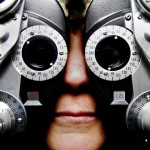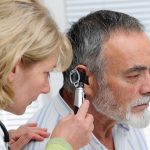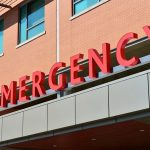As we age, problems with veins in the lower legs become more prominent and even severe. Many of those who are considered “elderly” don’t feel “old” and certainly want to maintain an active lifestyle.
Unfortunately, problems with the aging body don’t stop just because you still feel young. Some of these problems are cosmetic – changes in appearance such as muscle atrophy, fat deposits and sagging skin. Some problems however may be more severe with the development of vascular problems, particularly in the legs.
Vascular issues which are common in the elderly include:
Spider veins – In most cases, the development of the red or purple web-like veins that appear on the sides of the thighs and the lower legs is a cosmetic issue. They usually aren’t a medical issue and don’t often cause pain or discomfort but they may cause embarrassment. Treatment has traditionally involved cosmetic or injectable therapy.
Varicose veins – Damage to the valves in the veins of the legs can cause bulging blue veins to appear on the legs which can cause pain or discomfort. Longstanding varicose veins will cause damage to the skin around the ankle – often a browny discolouration and a dryness of the skin. In the worst cases this damage can break down into a venous ulcer – a sore on the leg that does not heal up. Many older people suffer from needless ulceration because of failure to treat varicose veins before the ulcer started. Treatment for varicose veins is now extremely successful and usually done on a ‘walk in – walk out’ basis under local anesthetic.
Peripheral vascular disease (PVD) – This is a medical issue that demands treatment. Peripheral vascular disease is caused by narrowing of the arteries, usually because of atherosclerosis – hardening of the arteries in layman’s terms. Narrowing of the arteries causes the blood to flow more slowly, causing pain in the legs on walking. The symptoms are usually felt first in the calves as a tightening or aching pain on walking a couple of hundred metres. About 10 percent of the population over 65 get this symptom and it is an early warning of artery disease in other areas such as the heart and the brain.
Treatment of PVD
Peripheral vascular disease is often an early warning of artery disease in other areas such as the heart and the brain. Patients with symptoms of pain in the calves on walking are 4 times more likely to have a heart attack or a stroke than patients without symptoms.
Treatment of artery disease initially requires a proper assessment by a vascular surgeon and detailed medical imaging by use of ultrasound or CT scanning. The majority of patients can be managed by drug treatment alone, focusing on slowing down disease progression and reducing other risk factors for heart disease and stroke.
Improvements in treatment
Improvements in drug treatments have reduced the number of patients requiring invasive surgery for arterial disease. In addition the majority of patients who do require treatment can now be offered minimally invasive options using angioplasty or stents to re-open or widen narrowed arteries and improve symptoms of pain on walking. Major open surgery for arterial disease is less common now than 10 or 20 years ago.
Dr. Eddie Chaloner said: “The main problem with managing vascular disease in the elderly is not being able to treat the problem early enough. I find it depressing that so many older patients develop debilitating and dangerous venous ulcers, which would never happen with proper treatment of their varicose veins – particularly as we can now treat this problem with highly successful laser surgery under local anesthetic”.
The problem of vascular disease in the elderly is not likely to go away and may even get worse as the incidence of risk factors such as diabetes and high blood pressure continue to pose significant problems. No matter how active those over 65 wish to remain, these problems will continue to warrant intervention but the development of improved equipment and procedures is helping to minimize the risks and allow patients to return to normal activity much sooner.





